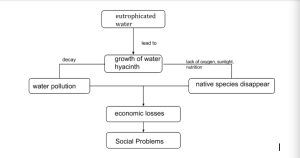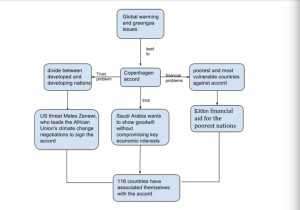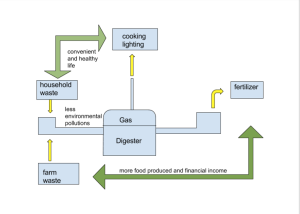In 150-200 words, analysis how your hometown or a place you are familiar with is affected by biodiversity. You can use any source you want, and you need to cite.
My hometown is located in southeast of China, where is the main area to fish and grow rice. We heavily rely on the water system around us. Water hyacinth, which named “Eichhornia crassipes (Mart.) Solme” academically, now is considered to be an extremely destructive plant in my country. It originally grows in the Amazonian basin, and it is a warm water aquatic plant (this is why it only could survive in southeast of China but cannot spared to North). Water hyacinth used to be imported as pig feed decades ago. However, due to its productive character, it reproduces rapidly and densely. As a result, other aquatic plants and animals die because of lacking oxygen, sunlight, and nutrition, which propagates extremely serious ecological, economical and social problems in my hometown. Large area of died water hyacinth decay, and it will pollute local water system. According to the data, before 1960’s there were about 16 species of plants and 68 species of animals existed in this area, but just after 1980’s, only 30 species plants and animals survived. In addition, it is very difficult to wipe all of them out, it has threatened local native species diversity and changes the local environment dramatically.
Aboul-Enein, Ahmed M., Ahmed M. Al-Abd, Emad A. Shalaby, Faten Abul-Ela, Amr A. Nasr-Allah, Ali M. Mahmoud, and Hany A. El-Shemy. “Eichhornia Crassipes (Mart) solms: From water parasite to potential medicinal remedy.” Plant Signaling & Behavior. Landes Bioscience, 01 June 2011. Web. 13 Apr. 2016.http://www.ncbi.nlm.nih.gov/pmc/articles/PMC3218481/
“Water Hyacinth.” Baidubaike. Web. 13 Apr. 2016. http://baike.baidu.com/link?url=kDU3oSMO4RyYo3DM9M2y5GKfvMebb37xOGI2DFL3fc53VLyTkwzwjXSTyRKCv4kLXhS3wI1P4hCpqwo_eEwZqa
Draw a system a system diagram about what you have discussed before.
In 150-200 words, please provide at least two methods you think of to maintain biodiversity of the place you described, and analysis both their advantages and disadvantages.
In order to maintain biodiversity, several renovate ways have been developed. First, introducing water hyacinth’s natural enemy species. The benefits of this method are that new species can restrain water hyacinth growth naturally and ecologically. Once it integrates into local area, it will balance the whole ecosystem without destroying anything. However, this method is highly risky. Water hyacinth is an invaded species, and if people introduce a new species, this new species may also become a harmful invader. Second, reduce nutrition in water. The main reason why water hyacinth grows uncontrolled is eutrophication in water. If people can reduce nutrition in water system, water hyacinth can be controlled. However, water eutrophication is due to fertilizer overusing. People need to develop advanced technology to grow crops, but it is costly and will not achieve in a short time. Third method is using laborers to salvage. It is the safest way and cost less, but it is time consumption and inefficient. In short, until today people haven’t come up with a perfect method to solve water hyacinth in the city.




